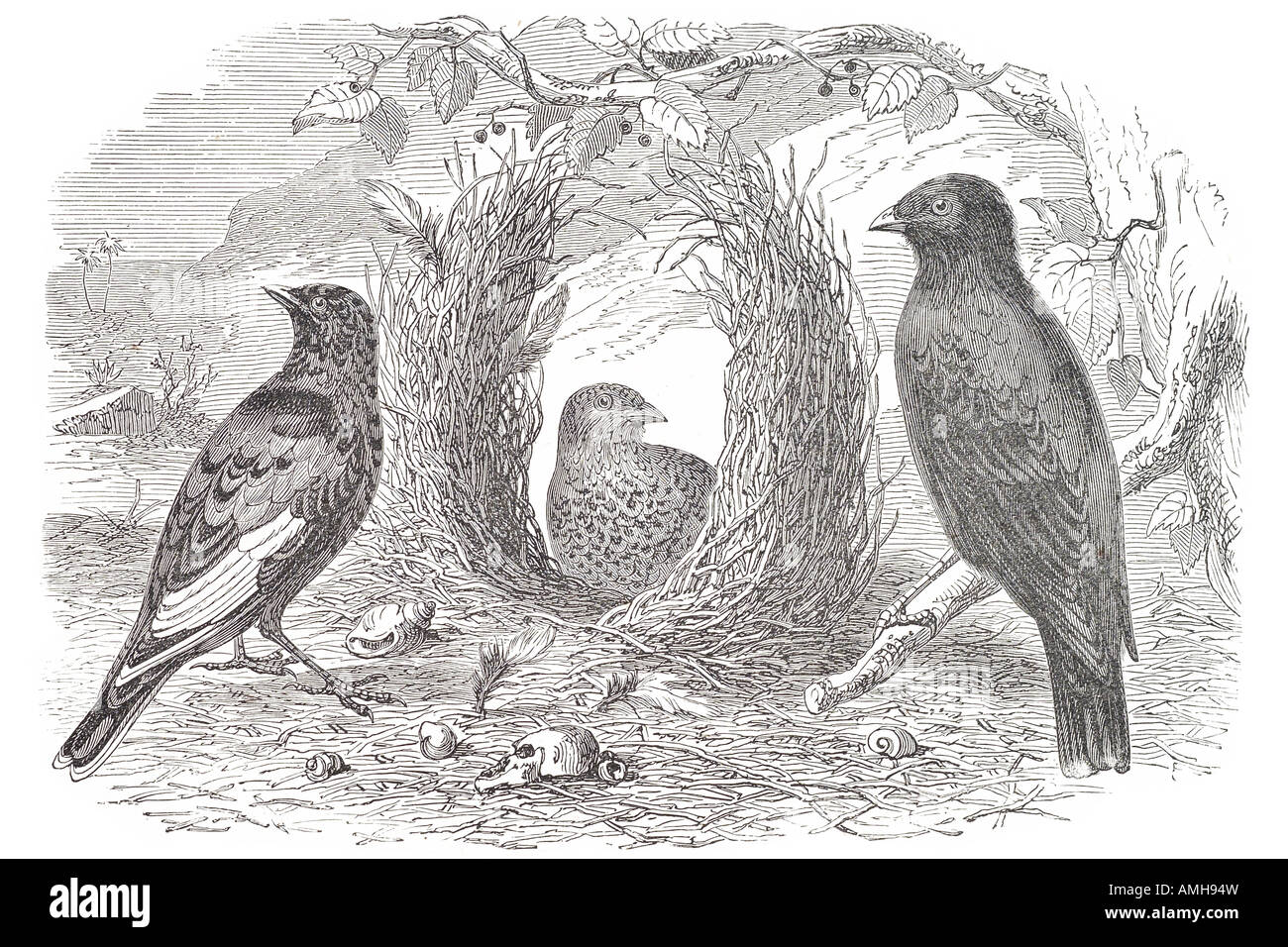satin bower bird Bowerbirds catbird Ptilonorhynchidae tropical northern Australia New Guinea desert fruit nest ground violaceus

Image details
Contributor:
Alan King engraving / Alamy Stock PhotoImage ID:
AMH94WFile size:
48.2 MB (3.6 MB Compressed download)Releases:
Model - no | Property - noDo I need a release?Dimensions:
5025 x 3350 px | 42.5 x 28.4 cm | 16.8 x 11.2 inches | 300dpiMore information:
Illustrated travels a record of discovery geography and adventure edited by h w bates assistant secretary of the royal geographical society with engravings from original drawings by celebrated artists cassell petter and & galpin London paris new york. catbirds are monogamous and raise chicks together, but all other bowerbirds are polygynous, with the female building the nest and raising the young alone. These latter species are sexually dimorphic, with the female being drab in color. Bowerbirds build nest by laying soft materials, such as leaves, ferns, and vine tendrils on top of a loose foundation of sticks. They lay one or two eggs, which hatch after 19 to 24 days, depending on species. The most notable characteristic of bowerbirds is the extraordinarily complex behaviour of males, which is to build a bower to attract mates. Depending on the species, the bower ranges from a circle of cleared earth with a small pile of twigs in the center to a complex and highly decorated structure of sticks and leaves — usually shaped like a walkway, a small hut or a maypole — into and around which the male places a variety of objects he has collected. These objects — usually strikingly blue in hue — may include hundreds of shells, leaves, flowers, feathers, stones, berries, and even discarded plastic items or pieces of glass. The bird spends hours carefully sorting and arranging his collection, with each object in a specific place; if an object is moved while the bowerbird is away he will put it back in its place. No two bowers are the same, and the collection of objects reflects the personal taste of each bird and its ability to procure unusual and rare items (going as far as stealing them from neighboring bowers). At mating time, the female will go from bower to bower, watching as the male owner conducts an often elaborate mating ritual and inspecting the quality of the bower. Many females end up selecting the same male, and many under-performing males are left withou